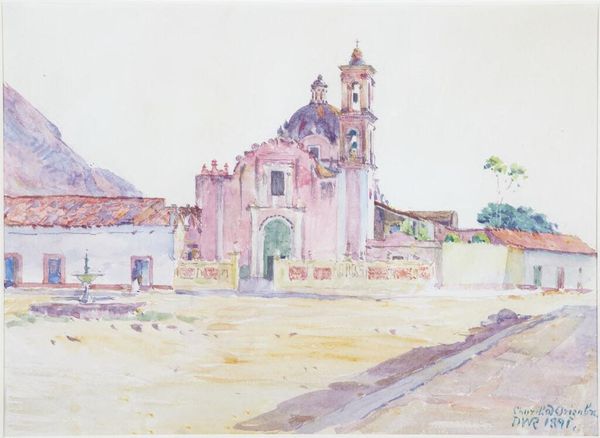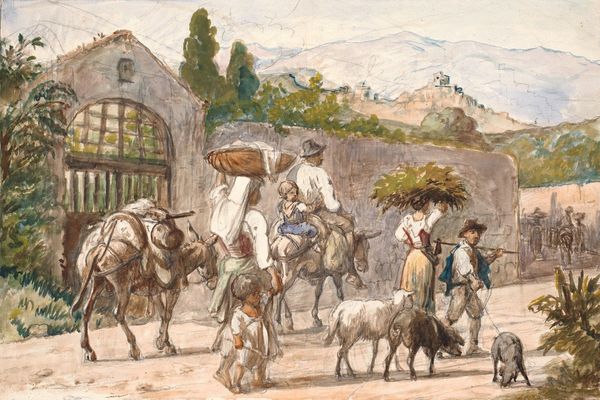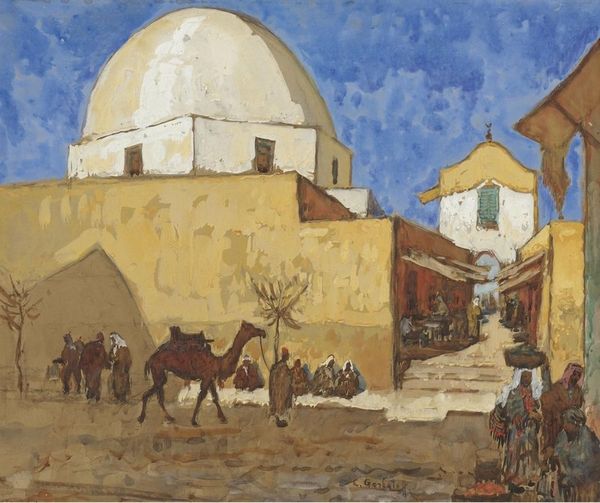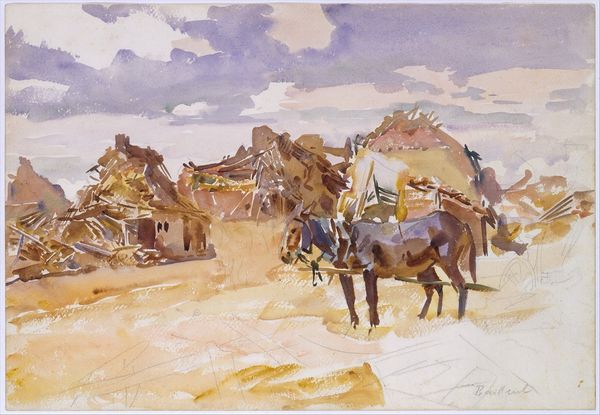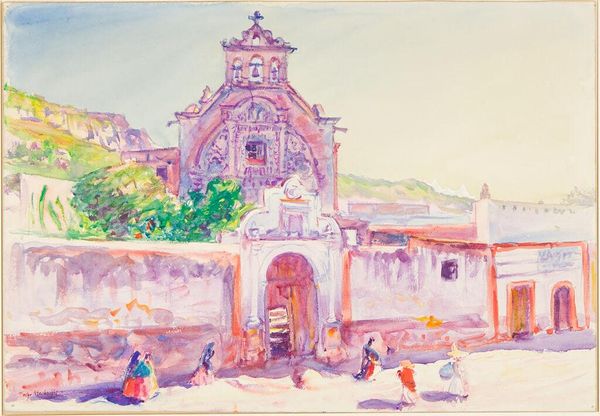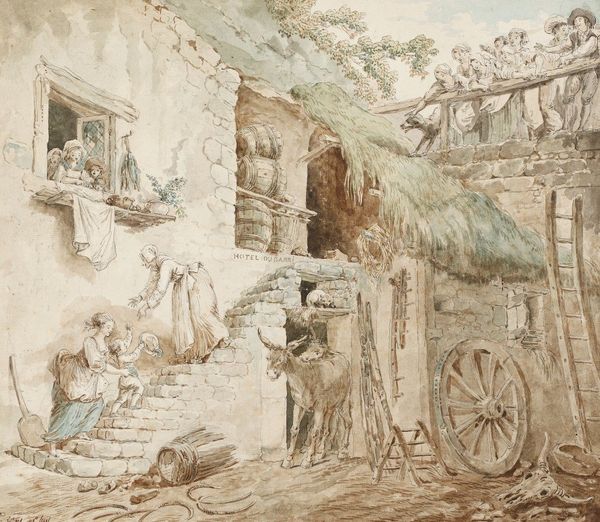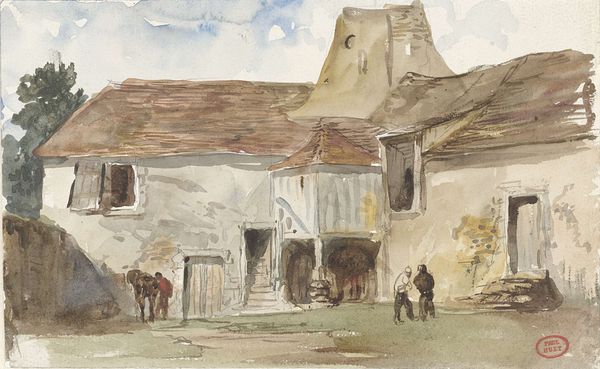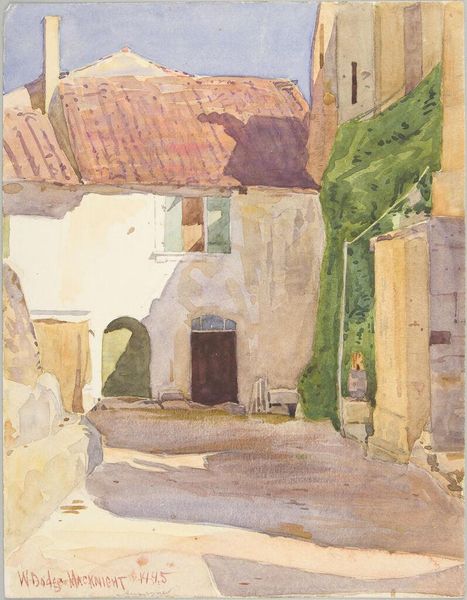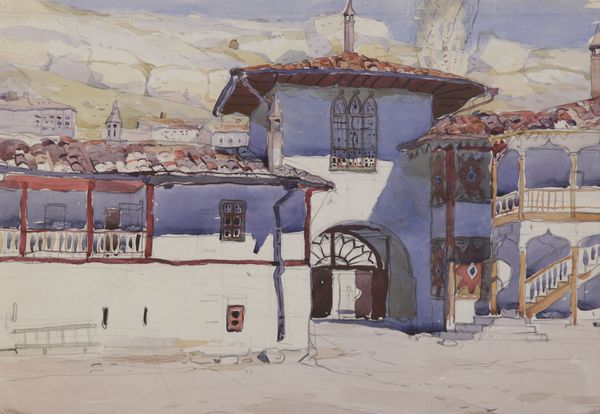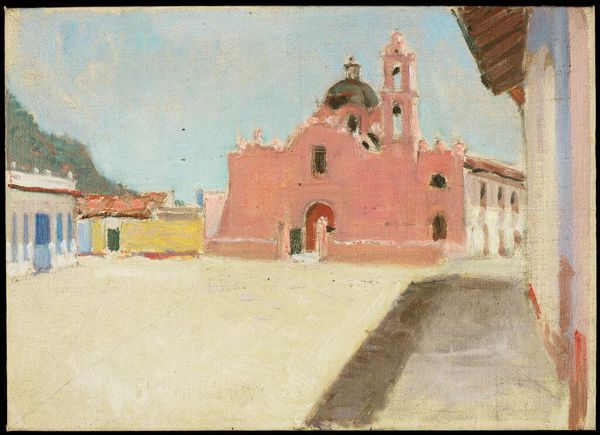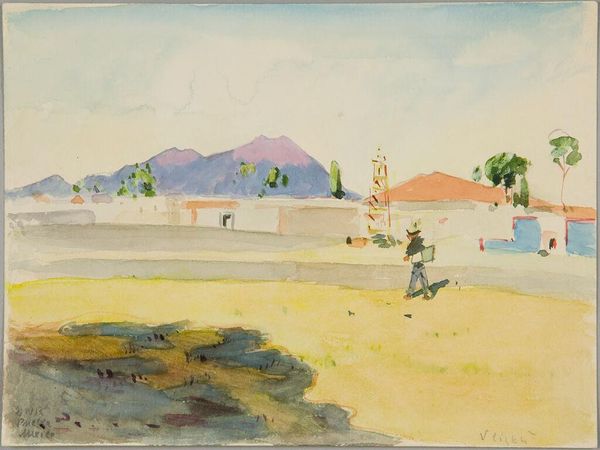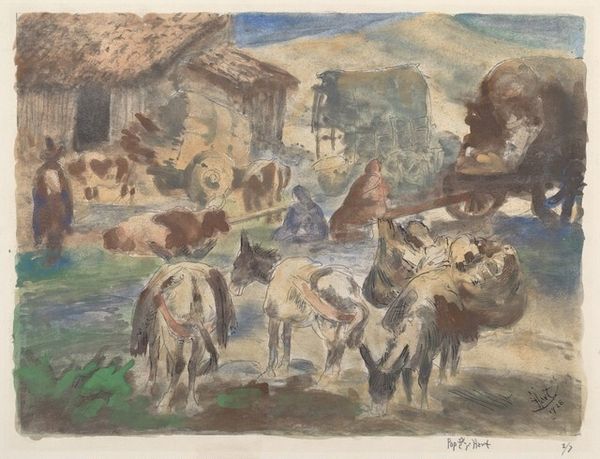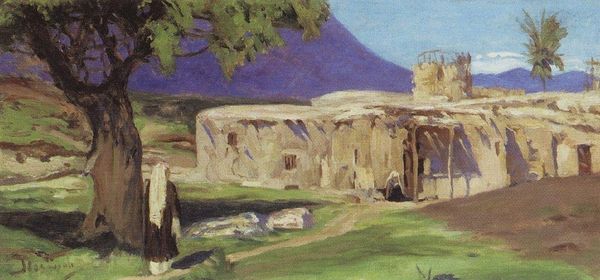
drawing
#
drawing
#
possibly oil pastel
#
handmade artwork painting
#
oil painting
#
coffee painting
#
underpainting
#
painting painterly
#
watercolour illustration
#
watercolor
#
warm toned green
#
watercolur painting
Dimensions: overall (approximate): 39 x 57.6 cm (15 3/8 x 22 11/16 in.)
Copyright: National Gallery of Art: CC0 1.0
Editor: This is John Lavalle's "Agua from El Calvario, Antigua, Guatemala" painted in 1950, appearing to be primarily watercolor. I'm really drawn to the way the light seems to define the shapes of the architecture. How would you interpret this work? Curator: I immediately consider the materials and labor embedded within. The watercolor itself, its accessibility as a medium in the mid-20th century, speaks to the artist's position and access to resources. Even the depicted ox cart—think about the physical labor required to build it and the animals’ role in transportation. How does that influence your understanding? Editor: That's interesting! I hadn't considered the ox cart beyond its visual contribution to the composition. So, you're saying the painting itself, because it is watercolour, positions the artist within the means of production? Curator: Precisely. Watercolor allowed for quicker execution and portability, hinting at a more immediate, documentary-style engagement with the scene. Then, compare this with the monumentality of the church rendered using what may be local materials; you've got a visual tension setting social layers against one another. What does that contrast evoke for you? Editor: I see what you mean. It adds a layer of commentary about everyday life juxtaposed with the enduring presence of the church. Thinking about the handmade nature of both the oxcart and painting really changes my perception. Curator: Right, and handmade means embedded labor, intentional choices, and cultural context reflected through those choices. It highlights value, even in what might be overlooked in favor of traditional high art subjects. Editor: I hadn't thought of that, considering the materials and process. Thank you, that shifted my perception quite a lot. Curator: Indeed! Examining the 'how' and 'what' things are made from unveils unseen layers of meaning and socioeconomic relationships embedded in this, and every work of art.
Comments
No comments
Be the first to comment and join the conversation on the ultimate creative platform.
